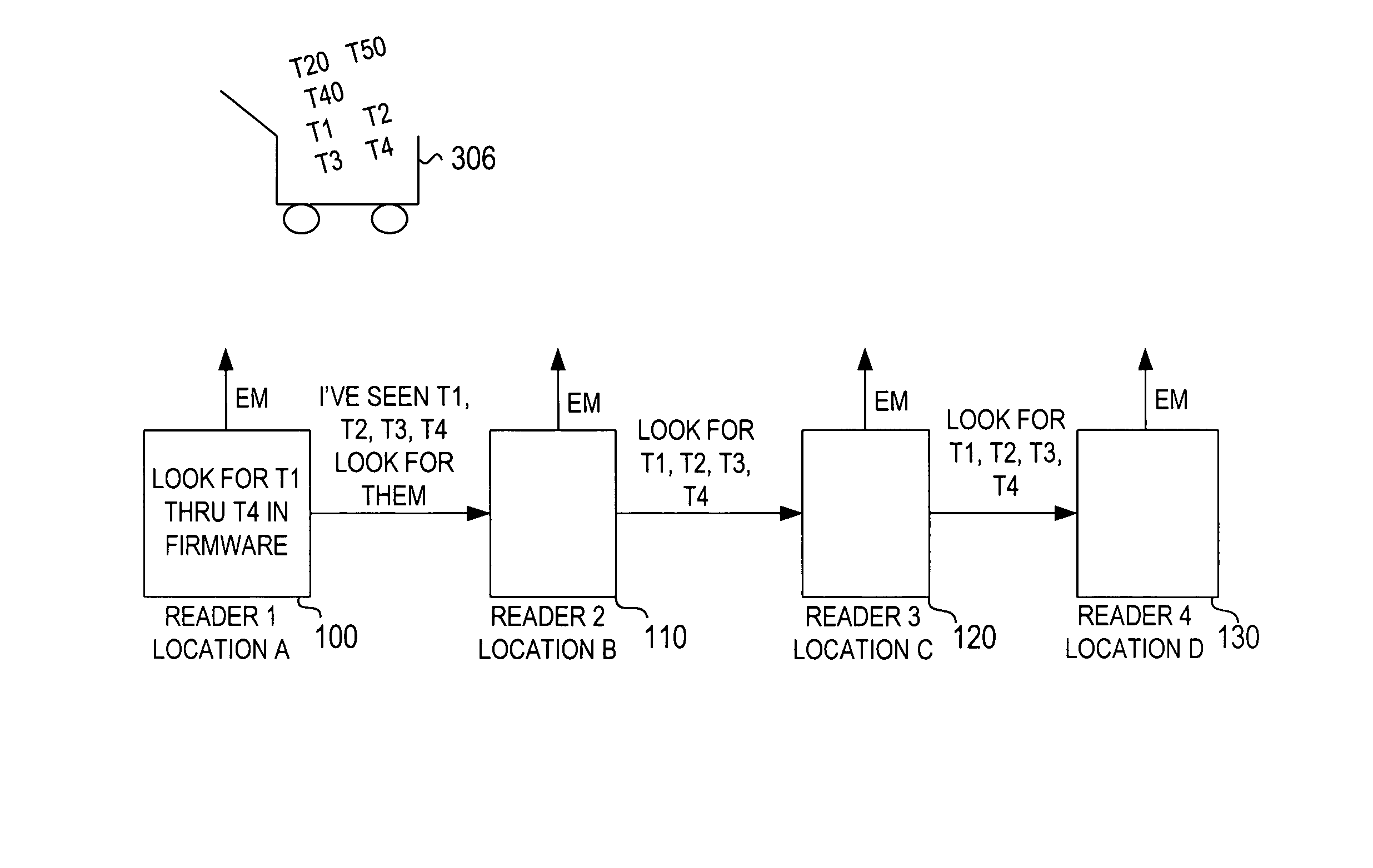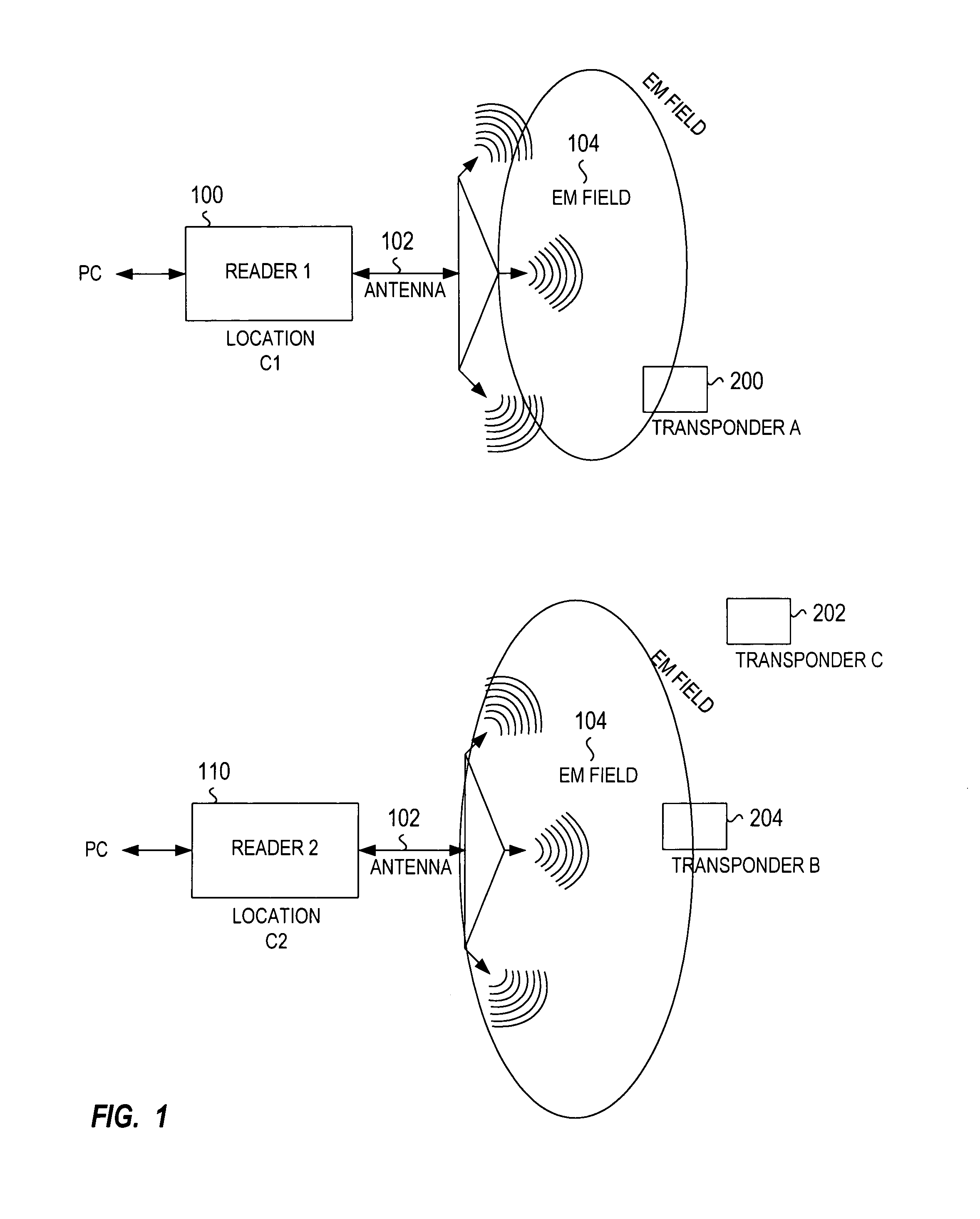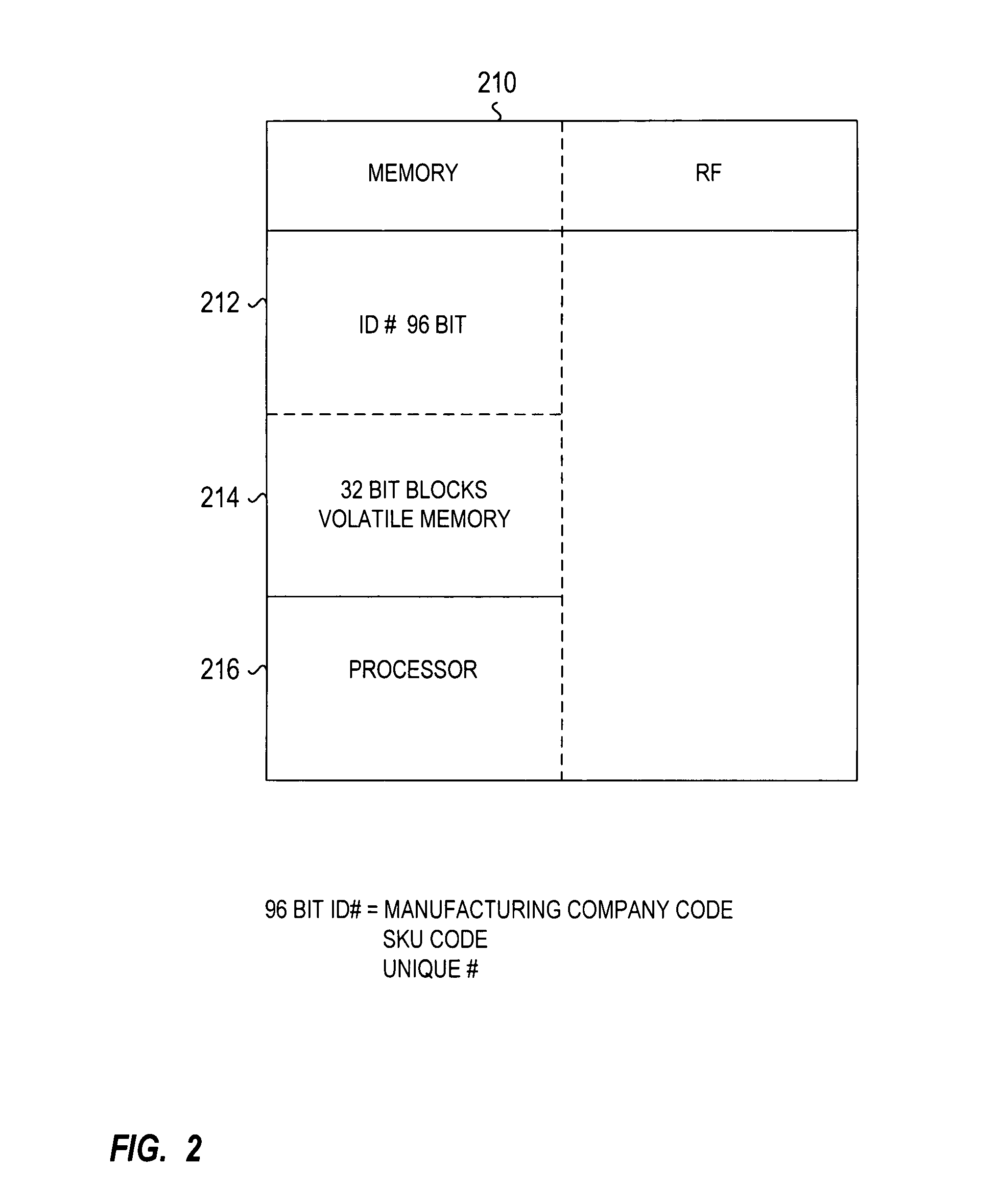RFID tag filtering and monitoring
a technology of filtering and monitoring, applied in the field of rfid tag filtering and monitoring, can solve the problems of overwhelming servers and computers, huge data processing bottlenecks, and difficult organization of information, and achieve the effect of facilitating the tracking of items
- Summary
- Abstract
- Description
- Claims
- Application Information
AI Technical Summary
Benefits of technology
Problems solved by technology
Method used
Image
Examples
Embodiment Construction
[0030]In describing an embodiment of the invention illustrated in the drawings, specific terminology will be used for the sake of clarity. However, the invention is not intended to be limited to the specific terms so selected, and it is to be understood that each specific term includes all technical equivalents which operate in a similar manner to accomplish a similar purpose.
[0031]FIG. 1 illustrates that readers in a particular environment read tags through use of both near field inductive coupling and far field electromagnetic waves. As shown in FIG. 1, reader 100 transmits a signal from antenna 102, generating an electromagnetic field 104 which strikes transponder A 200. Transponder A 200 returns a back-scattered signal which is read by reader 100 indicating that the tag is present at that location. As will be understood by those skilled in the art, a variety of RFID systems can be used to create the reader transponder system including passive RFID and active RFID. A number of st...
PUM
 Login to View More
Login to View More Abstract
Description
Claims
Application Information
 Login to View More
Login to View More - R&D
- Intellectual Property
- Life Sciences
- Materials
- Tech Scout
- Unparalleled Data Quality
- Higher Quality Content
- 60% Fewer Hallucinations
Browse by: Latest US Patents, China's latest patents, Technical Efficacy Thesaurus, Application Domain, Technology Topic, Popular Technical Reports.
© 2025 PatSnap. All rights reserved.Legal|Privacy policy|Modern Slavery Act Transparency Statement|Sitemap|About US| Contact US: help@patsnap.com



